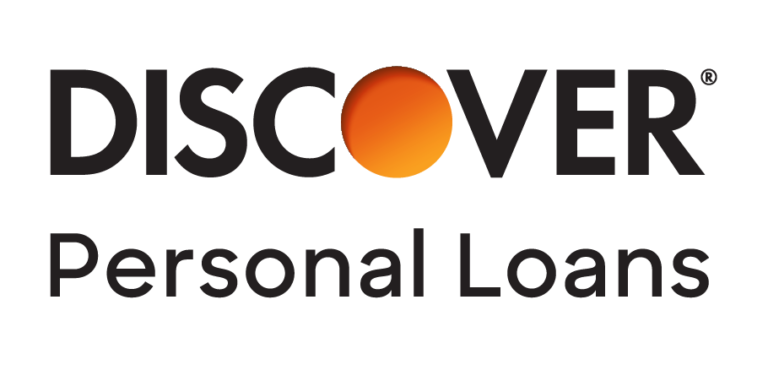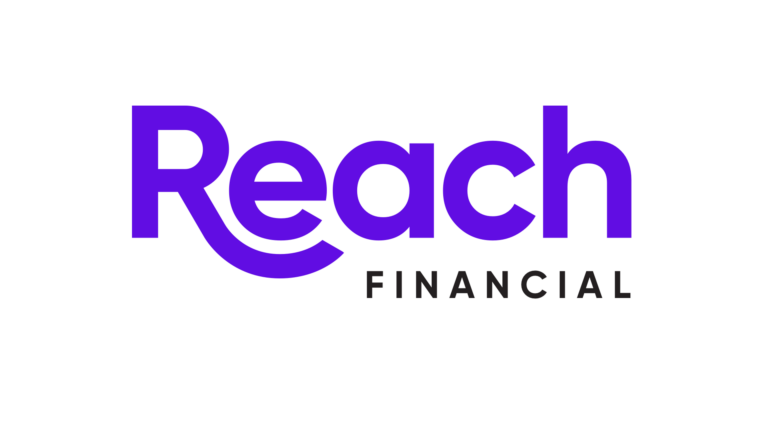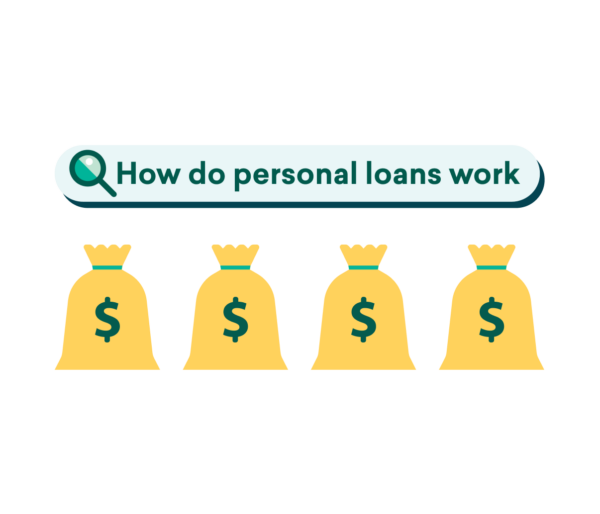Our goal is to give you the tools and confidence you need to improve your finances. Although we receive compensation from our partner lenders, whom we will always identify, all opinions are our own. Credible Operations, Inc. NMLS # 1681276, is referred to here as "Credible."
If you need to borrow money for a big expense like a car repair, wedding, or home renovation project, you may be considering taking out a personal loan.
It’s easy to see the appeal of this loan type. Personal loans are a very flexible borrowing option that allows you to use the funds to cover virtually any expense. You can even consolidate debt with a personal loan. But before you take one out, it’s important to understand how personal loans work.
How personal loans work
You can get a personal loan from banks, credit unions, and online lenders. Most personal loans are unsecured, meaning you generally don’t have to put up collateral to secure the loan. You’ll have the best chance of qualifying for a personal loan if you have good credit (a FICO score of 670 or higher) and a low debt-to-income ratio (the amount of your current income that goes toward debt). You may also need to meet a lender’s minimum income requirement.
If a lender approves your loan application, you’ll generally receive your funds as an upfront lump sum within one business day to a week. To repay a personal loan, you make fixed monthly payments, with interest, over the course of the repayment term. Your repayment term can be as short as a few months or as long as seven years.
The average personal loan rate is 11.48% as of February 2023. If you borrow $10,000 at that rate over a five-year loan term, your loan would end up costing you $3,190 in total interest and your monthly payment would be $220. You can use a personal loan calculator to estimate your loan costs ahead of time.
When shopping around for a personal loan, don’t forget to account for the different fees that some lenders charge, like origination fees (for processing your loan application) or prepayment penalties.
Pros
- Flexible
- Typically lower rates than credit cards
- Usually come with fixed rates and repayment terms
Cons
- May have fees
- May not qualify if you have poor credit
- Can harm your credit if you miss payments
What can I use a personal loan for?
Personal loans can be used for virtually any expense, unlike lending products that are designated for a specific purpose. Some common uses for personal loans include:
- Debt consolidation
- Home improvement
- Major life events (like a wedding or honeymoon)
- Funeral costs
- Medical bills
- Vacations
- Large purchases, such as appliances or furniture
How is the interest rate determined?
Generally, the better your credit score is, the lower the interest rate you’ll qualify for. There are personal loans designed to serve customers with bad credit scores, but they generally have higher rates. Your income is also taken into account by lenders when determining your interest rate.
Personal loan lenders also look at your debt-to-income ratio (DTI) to help determine how much room you have in your budget. The easier it is for you to afford payments, the less risk you pose and the more likely you are to get a favorable interest rate.
Ready to find your personal loan?
Credible makes it easy to find the right loan for you.
Find My Rate
Checking rates won’t affect your credit
How does a personal loan affect my credit score?
Taking out a personal loan can potentially help and hurt your credit score. If you make all of your loan payments on time, your credit score can improve. Additionally, taking on a personal loan can help you diversify your credit mix, which is a factor in your credit score. And if you use a personal loan to pay off a revolving form of credit (like a credit card), you can actually lower your credit utilization and potentially raise your credit score.
On the flip side, you can lower your credit score if you fail to make payments. You’ll also experience a temporary hit to your credit score when you apply for a personal loan, since the lender will run a hard credit check during the application process.
Types of personal loans
There are a few different types of personal loans, including:
- Secured personal loans: These loans are backed by collateral and are easier to qualify for if you have bad credit.
- Unsecured personal loans: Because there’s no collateral for unsecured personal loans, they pose more risk to the lender and can come with higher interest rates.
- Cosigned loans: If you struggle to qualify for loans on your own, you may be able to apply with a cosigner who has good credit. Keep in mind that your cosigner will be responsible for making payments if you fail to repay the loan.
- Debt consolidation loans: A debt consolidation loan is a type of personal loan that you use to pay off multiple debts, typically at a lower interest rate.
- Payday loans: These loans can be easier to qualify for, but they come with notoriously high interest rates — sometimes nearly 400% — and very short repayment terms. If at all possible, it’s best to avoid payday loans.
How to get a personal loan
When it comes time to apply for a personal loan, you’ll generally take these steps:
- Check your credit: Knowing what your credit score is can give you an idea of which loans you may qualify for.
- Compare lenders: Shop around to see which lender offers the best loan for your needs at the most favorable rate. Many lenders allow you to prequalify on their website, without affecting your credit.
- Complete the application: Once you’ve selected a lender, submit an application. You may need to provide supporting documentation (such as pay stubs or tax returns).
- Get your funds: After you sign the loan agreement, you’ll typically receive the funds via a check or direct deposit. If it’s a debt consolidation loan, the lender may send the money directly to your creditors.
| Lender | Fixed rates | Loan amounts | Check rates |
|---|---|---|---|
 | 9.95% - 35.99% APR | $2,000 to $35,000** | |
|
|||
 | 8.24% - 18.99% APR | $10,000 to $50,000 | |
|
|||
 | 6.99% - 35.99% APR | $2,000 to $50,000 | |
|
|||
 | 7.99% - 24.99% APR | $2,500 - $40,000 | |
|
|||
 | 7.95% - 29.99% APR | $3,000 to $40,000 | |
|
|||
 | 7.04% - 35.99% APR | $1,000 to $40,000 | |
|
|||
 | 6.49% - 25.29% APR with autopay | $5,000 to $100,000 | |
|
|||
 | 18.0% - 35.99% APR | $1,500 to $20,000 | |
|
|||
 | 8.49% - 17.99% APR | $600 to $50,000 (depending on loan term) | |
|
|||
 | 7.99% - 35.99% APR | $3,500 to $40,000 | |
|
|||
| 8.74% - 35.49% APR10 | $5,000 to $100,000 | ||
|
|||
 | 11.69% - 35.99% APR7 | $1,000 to $50,000 | |
|
|||
 | 7.74% - 35.99% APR | $1,000 to $50,000 | |
|
|||
 | 6.6% - 35.99% APR4 | $1,000 to $50,0005 | |
|
|||
Common borrowing mistakes
When taking out a personal loan, avoid the following:
- Not reading the fine print: It’s essential to read and understand the terms and conditions of the loan before signing the agreement. This includes the interest rate, repayment terms, and any fees associated with the loan.
- Borrowing more than you can afford: Only borrow what you can afford to repay. If you borrow more than you need, you’ll have to pay interest on that higher amount, which adds to your cost of borrowing.
- Missing payments: If you aren’t able to make your payments, you’ll likely incur late fees. You’ll also hurt your credit score, since your payment history makes up 35% of your credit score.
Personal loan alternatives
If a personal loan isn’t right for you, consider these alternatives:
- Credit cards: If you only need to borrow a small amount of money to bridge a gap, a credit card may be a good option. If you have good credit, you may even qualify for a credit card that has a 0% interest introductory period. This can make it easier to pay off debt faster (since you won’t have to factor in interest) and can help you save money.
- Home equity line of credit (HELOC): If you own a home, you may be able to borrow against your equity with a HELOC. This is a revolving line of credit that you borrow from (up to a limit) as needed. However, since your home equity acts as collateral, a lender can foreclose on your home if you default on the loan.
- Cash-out refinance: If you own your home, you can also use a cash-out refinance to borrow money. With this strategy, you take out a new mortgage for more than you currently owe on your home and pocket the difference. Keep in mind that, as with a HELOC, you risk losing your home if you fail to repay the loan.
Dori Zinn has contributed to the reporting of this article






